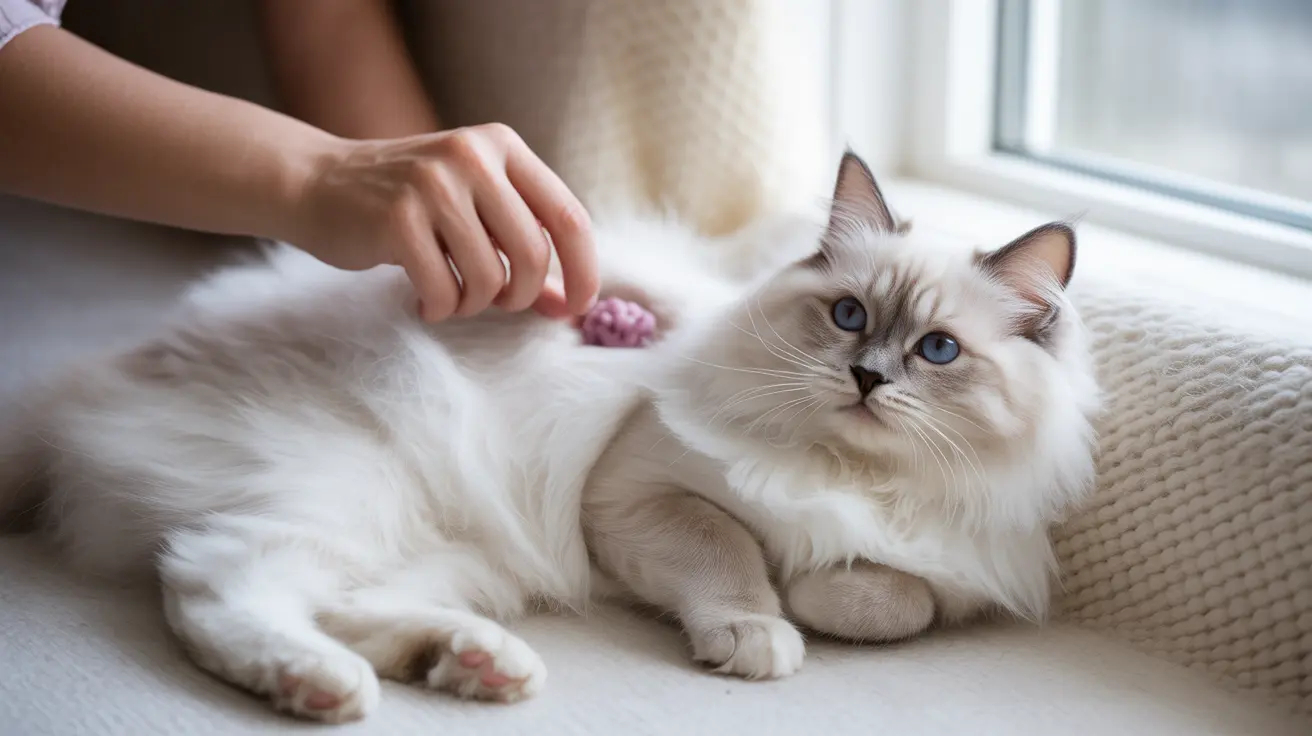Discovering your cat has a lump on their back near the spine can be concerning for any pet owner. These lumps can range from harmless fatty deposits to more serious conditions requiring immediate veterinary attention. Understanding the various causes, symptoms, and treatment options is crucial for ensuring your cat's health and well-being.
In this comprehensive guide, we'll explore the different types of lumps that can appear near a cat's spine, what they might mean, and when you should seek professional medical attention.
Common Types of Spinal Lumps in Cats
Benign Growths and Lipomas
Lipomas are soft, moveable fatty tumors that commonly develop under the skin. While less frequent in cats compared to dogs, these benign growths are more likely to appear in older or overweight cats. Though usually harmless, large lipomas may impact mobility if they develop near the spine.
Abscesses and Infections
Abscesses often result from cat fights or scratches, appearing as warm, painful swellings filled with pus. When located near the spine, they can cause significant discomfort and may be accompanied by fever and lethargy. Prompt veterinary treatment is essential to prevent the spread of infection.
Serious Conditions Affecting the Spine
Tumors and Malignant Growths
While less common, malignant tumors can develop along the spine. These may start as small lumps but can grow and spread if left untreated. Early detection and intervention are crucial for successful treatment outcomes.
Spinal Disorders and Deformities
Conditions like spondylosis deformans can create bony protrusions along the spine that may feel like lumps. While often age-related and harmless, these conditions should be monitored for potential complications affecting mobility.
Signs That Require Immediate Attention
Watch for these warning signs that indicate your cat needs urgent veterinary care:
- Rapid growth or changes in the lump's size
- Signs of pain when touching the area
- Difficulty walking or jumping
- Changes in bladder control
- Loss of appetite or lethargy
- Fever or visible infection
Diagnostic Process and Treatment Options
Your veterinarian will likely perform a thorough physical examination and may recommend additional tests such as:
- X-rays or MRI scans
- Fine needle aspiration
- Blood work
- Biopsy if necessary
Treatment approaches vary based on the underlying cause and may include:
- Surgical removal for concerning growths
- Antibiotics for infections
- Anti-inflammatory medications
- Pain management strategies
- Physical therapy when appropriate
Frequently Asked Questions
What are the most common causes of a lump on a cat's back near the spine?
The most common causes include lipomas (fatty tumors), abscesses from fights or injuries, cysts, and in some cases, more serious conditions like tumors or spinal abnormalities.
How can I tell if the lump near my cat's spine is an abscess, lipoma, or tumor?
While only a veterinarian can make a definitive diagnosis, abscesses typically feel warm and painful, lipomas are soft and moveable, and tumors tend to be firm and fixed in place. Professional evaluation is essential for accurate identification.
When should I take my cat to the vet if I find a lump on their back near the spine?
Schedule a veterinary appointment as soon as you notice any new lump. Seek immediate care if the lump is painful, growing rapidly, or accompanied by other symptoms like fever or mobility issues.
Can spinal conditions like spondylosis deformans cause lumps or bumps on a cat's back?
Yes, conditions like spondylosis deformans can create bony protrusions along the spine that may feel like bumps. These are typically age-related changes but should be evaluated by a veterinarian.
What treatments are available for lumps on a cat's back that affect their spine or mobility?
Treatment options depend on the underlying cause and may include surgical removal, medication, antibiotics for infections, or conservative management with regular monitoring. Your veterinarian will recommend the most appropriate treatment plan based on diagnosis.
Preventive Care and Monitoring
Regular veterinary check-ups and careful monitoring of your cat's physical condition can help catch potential issues early. Keep your cat at a healthy weight, provide appropriate exercise, and maintain an indoor lifestyle to reduce the risk of injury-related lumps and infections.
Remember that early detection and treatment often lead to better outcomes. Don't hesitate to consult your veterinarian about any unusual lumps or changes in your cat's condition.






